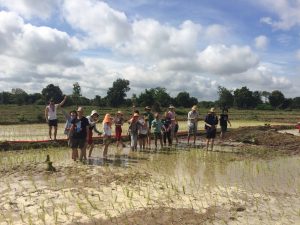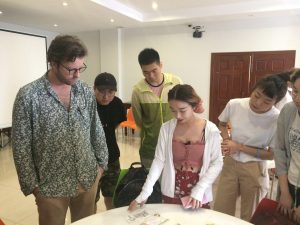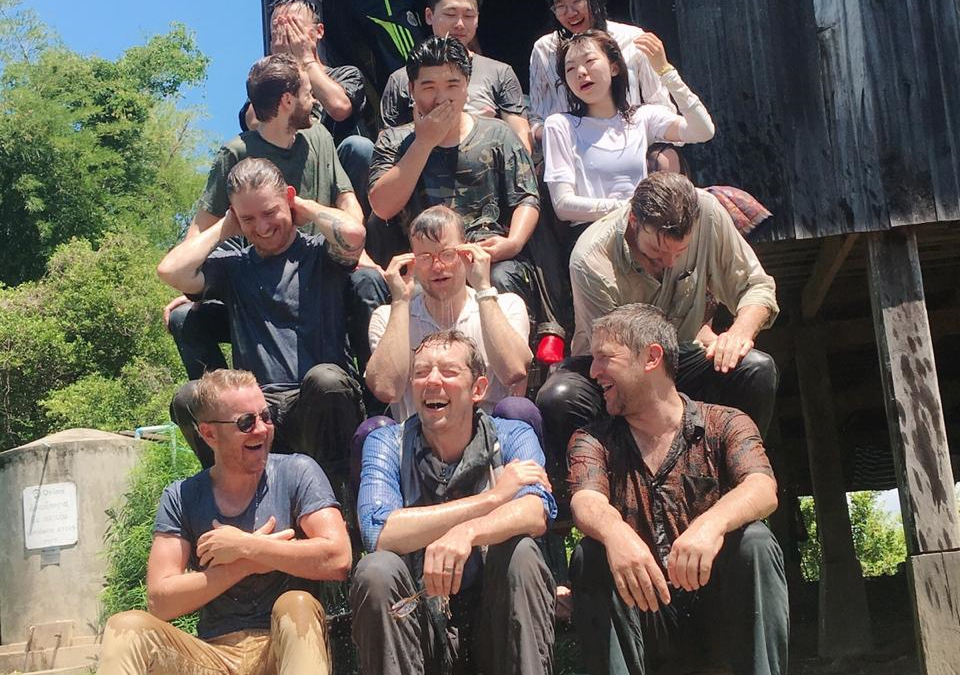For communities like Koh Thnaot in Cambodia, the impacts of climate change are already being acutely felt. An ever-shortening and inconsistent wet season has cut their rice-harvesting season in half and made agricultural farming unpredictable, forcing the need to migrate further afield to find work. Increased dust levels from the extended dry season have also led to a dramatic rise in cases of childhood croup, challenging an already over-stretched health sector. The inaugural EWB Design Research Summit, held in July 2019, sought to work with the community to better understand these challenges.
The key focus of the Design Research Summit was to collect data that can be used in ongoing design work to help better navigate these climatic changes. Based on the format of the successful Humanitarian Design Summits, the Design Research Summit cohort comprised 13 RMIT Master of Landscape Architecture students, two Professional landscape Architects and the EWB Research team. The group embarked on an immersive two-week learning experience in Cambodia, with five days within the rural Koh Thnaot community.

Planting rice.
The challenges facing this community reality cannot be underestimated. Rice is absolutely critical for the rural communities in Cambodia, with rice providing 75% of calorie intake for the average Cambodian. In the last five years, the community has had to shift their rice harvest from a 6-month season to 3-months, due to an ever-shortening wet season. Worse, the community reported that the rainy season no longer enjoyed the regular daily rains. Our group were there in the height of the rainy season, and witnesses only two larger rain events; only a few years ago these rains appeared at 3pm daily, like clockwork. Some families were faced with the possibility of losing their entire annual crop, as they had transplanted their rice seedlings to the fields in anticipation of the rains that did not come.

Students presenting an assignment back.
Students were trained on fundamental concepts such as sustainable development, strengths-based approaches, human-centred design and equipped with the research tools needed to make the most of their time in community. When in-community, they planted rice, interviewed families and mapped the community to gain a rich understanding of their context.
The final result was a series of mappings that helped highlight and sense-check different opportunities identified by the community. These mappings are being fed into an eight-week design studio, where students combine the rich contextual knowledge shared by community members with global data on climate change. Their plan is to map strategies to help ensure that the community can achieve their vision of living and thriving on Koh Thnaot fifty years into the future. The skills of the participating Landscape Architects were impressive, as they need to map and project over this timescale and plan for different scenarios with flexible strategies.
It can be challenging to replicate the value of such first-hand insights through desk-based research. The EWB Design Research Summit is a powerful process for students to combine the rich contextual knowledge community members were kind enough to share, and the students’ ability to access global data, equipment and literature that those in-community don’t have access to.
EWB Australia aims to work alongside our partners to identify more opportunities to deliver this format of Research Summit to inform impactful ongoing research. For more information contact partnerships@ewb.org.au.
Learn how EWB Australia is addressing climate change in the Asia-Pacific region.
Featured image: the research group are blessed with water by the local monks.


